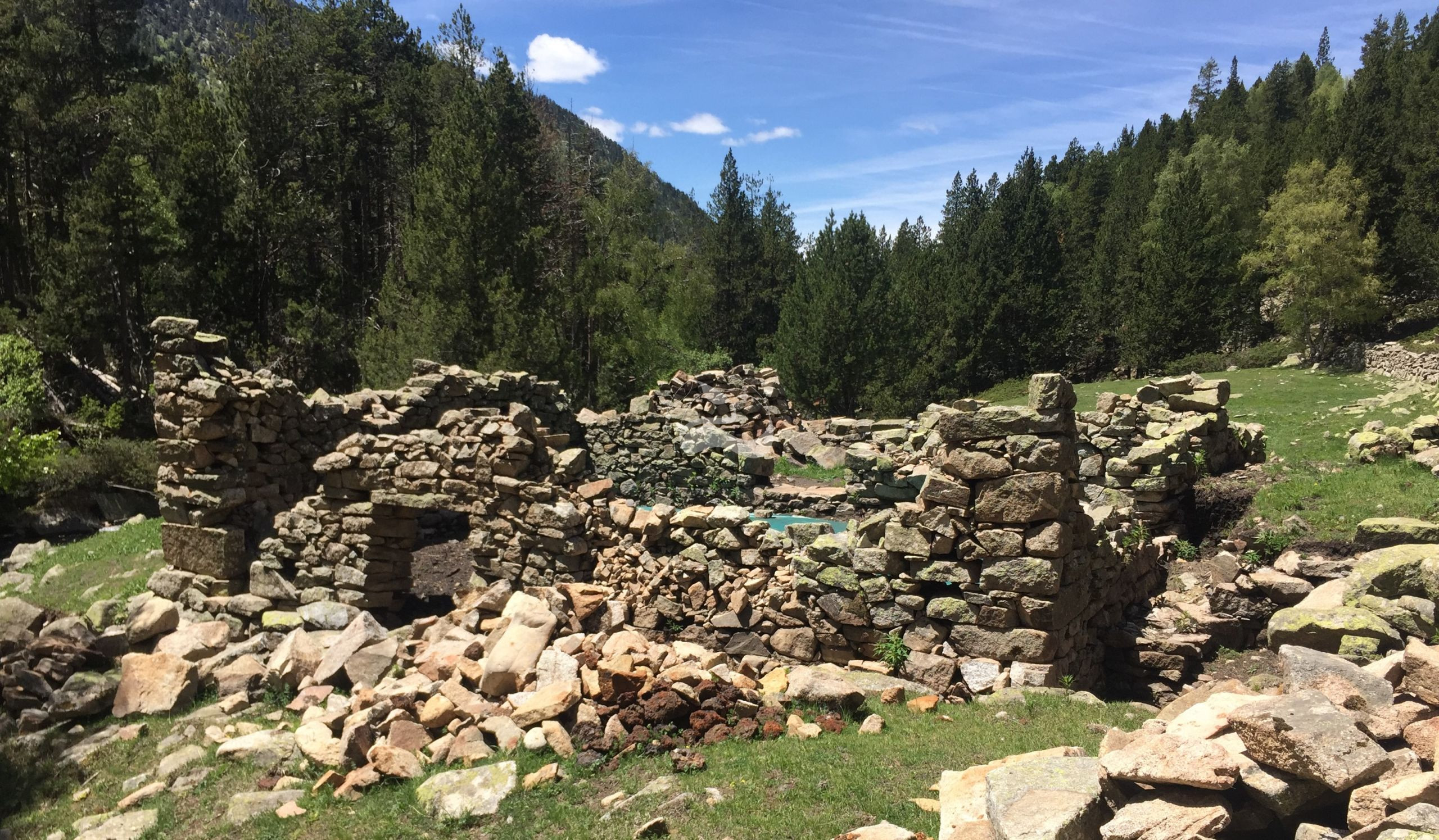
RESEARCH AND CONSERVATION PROJECT OF THE FORGE OF THE MADRIU (2021-2024).
The Madriu forge is an Asset of Cultural Interest in the category of archaeological sites included in the protected landscape of the VMPC. It integrates an area defined as a heritage / archeological reserve (ZRA) by the VMPC Conservation Plan, and brings together a heritage complex not only steel, but also agriculture and roads. This set is representative of the thematic diversity of the valley and its archaeological vestiges cover nearly six centuries of history of the VMPC. It is therefore an outstanding site in the history of the valley, but it is also and above all a unique national site, since there is no other fully preserved site (Farga and surroundings). Furthermore, it is a unique example of a Catalan forge from the 18th century. The study of this typology is unprecedented in the Pyrenees,
For all these reasons, on July 12, 2021, the Ministry of Culture and Sports of the Andorran government and the management commission of the Madriu-Perafita-Claror valley signed the collaboration agreement regarding the comprehensive conservation and revaluation program of the forge of Andorra (Madriu) that set the guidelines for technical and economic collaboration in the project on both sides.
It was about carrying out a complete study of the Madriu forge that included archaeological excavations and analysis of the materials in a specialized laboratory. A posteriori, the necessary interventions would be carried out for the conservation of the remains and their enhancement so that they could be visited.
It would be the first comprehensive conservation intervention to be carried out in the valley, and the study would allow first-hand knowledge of the iron and steel activity between the 18th and 19th centuries and how it shaped, in part, the personality of the Pyrenean society, and Andorra in particular.
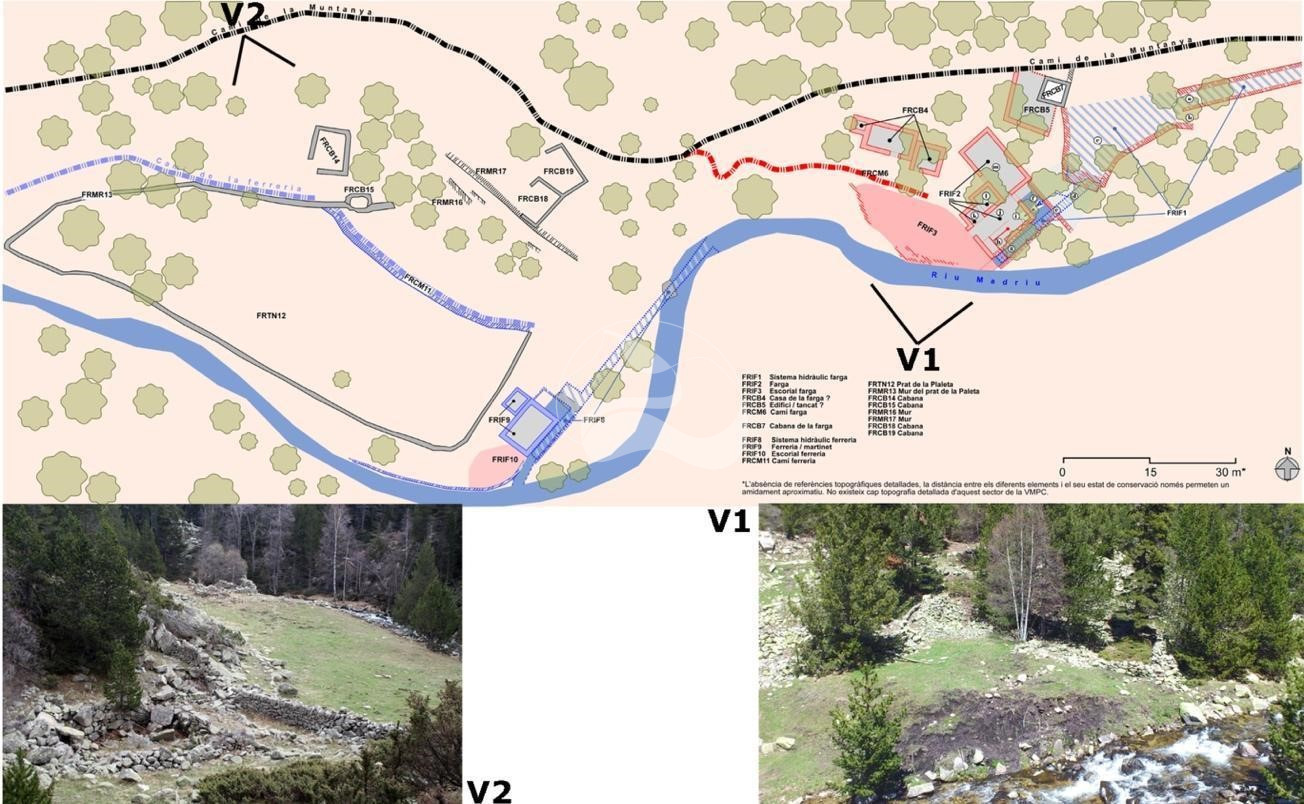
The structures of the forge and the hammer cover about 1000 m2. Add the dump and some associated structures, the total area of the deposit, without counting the accesses (roads), is 1,245 m2 and around 345 linear meters of double-faced dry stone walls must be treated.
First campaign: September 2021
The works were to begin in 2020, but the health crisis did not allow it. Thus, they finally started in September 2021.
None of the buildings retained their original volumetry, on the contrary, the plan of all of them was still readable. The height of the walls was very variable although, for the most part, the structures were very devastated (50 cm average height).
The team that worked on this first campaign included members of the Centro national de la recherche scientifique (CNRS) and the Artisans Bâtisseurs en Pierre Sèche (ABPS) association, as well as technicians from the Department of Cultural Heritage, the Comú de Andorra la Vella and of the Madriu-Perafita-Claror Valley.
The dry stone team focused on the restoration of the double south wall of the botás and began the restoration of the southeast wall of the antepara, while the team of archaeologists intervened in the hammer and the channel. Precisely the excavation of the initial part of the channel provided one of the most significant discoveries of this campaign, the wooden base of the windbox. It is the third structure of this type that has been documented in the Pyrenees!!
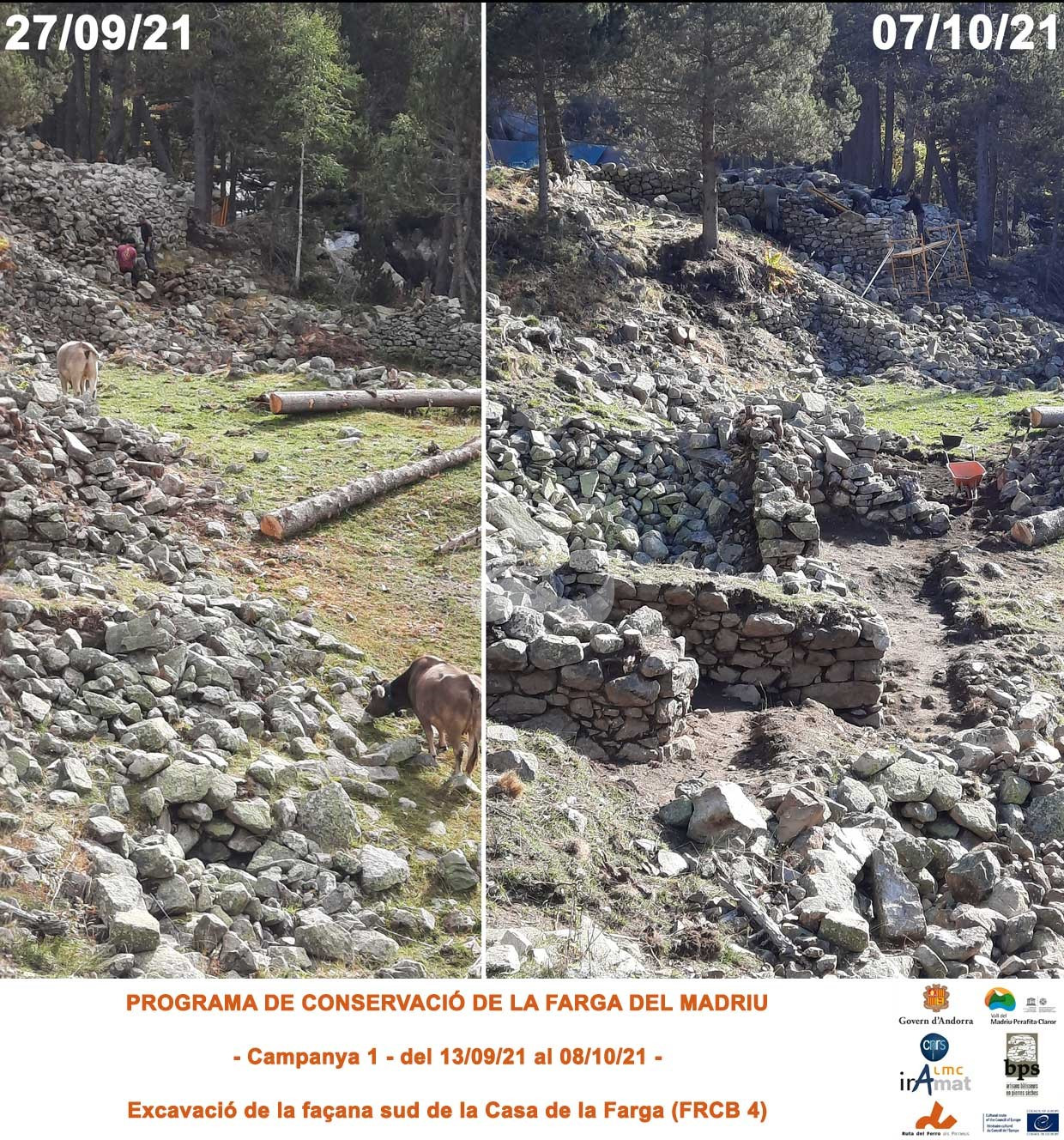
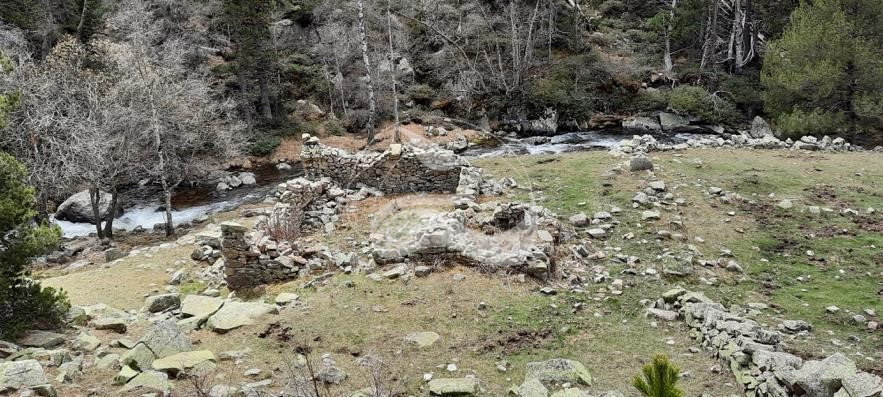
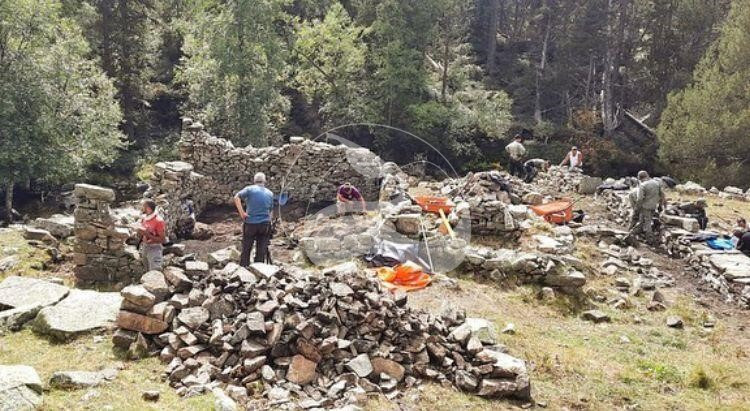
First week of work (September 20, 2021)- The restoration of the eastern sector of the enclosing wall of El Prat de Paleta has begun with the dry stone technique. Likewise, an archaeological survey next to this wall has revealed a phase of occupation prior to the construction of the La Farga hammer (end of the 18th century).
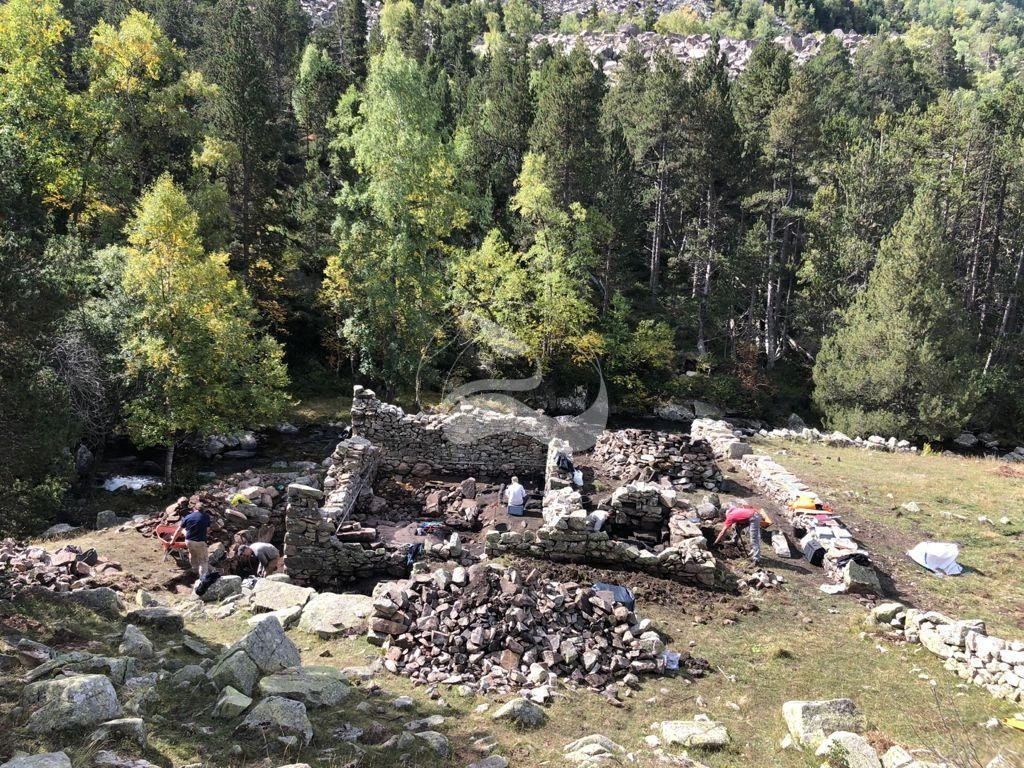
Third week of work (September 29, 2021) – The team of archaeologists has been able to document the construction and infrastructure of the hammer and has begun the excavation of the channel, which has provided one of the most significant discoveries, the wooden base of the box of wind.
Video link
Second campaign: August 2022
The team that has been working on this second campaign has once again included members of the Center national de la recherche scientifique (CNRS) and the Artisans Bâtisseurs en Pierre Sèche (ABPS) association, as well as technicians from the Department of Cultural Heritage, the Valle del Madriu-Perafita-Claror, but it has not counted on the workers of the Comú de Andorra la Vella.
In the 1st campaign, the dry stone team focused on the restoration of the double south wall of the botazo and began the restoration of the southeast wall of the antepara, while the team of archaeologists intervened in the hammer and the channel.
The project for the second phase of restoration focused on the blacksmith (restoration and crystallization of the walls of the workshop, the dressing room and the walls of the water area, and adaptation of the soil to ensure the protection of the archaeological reserve).
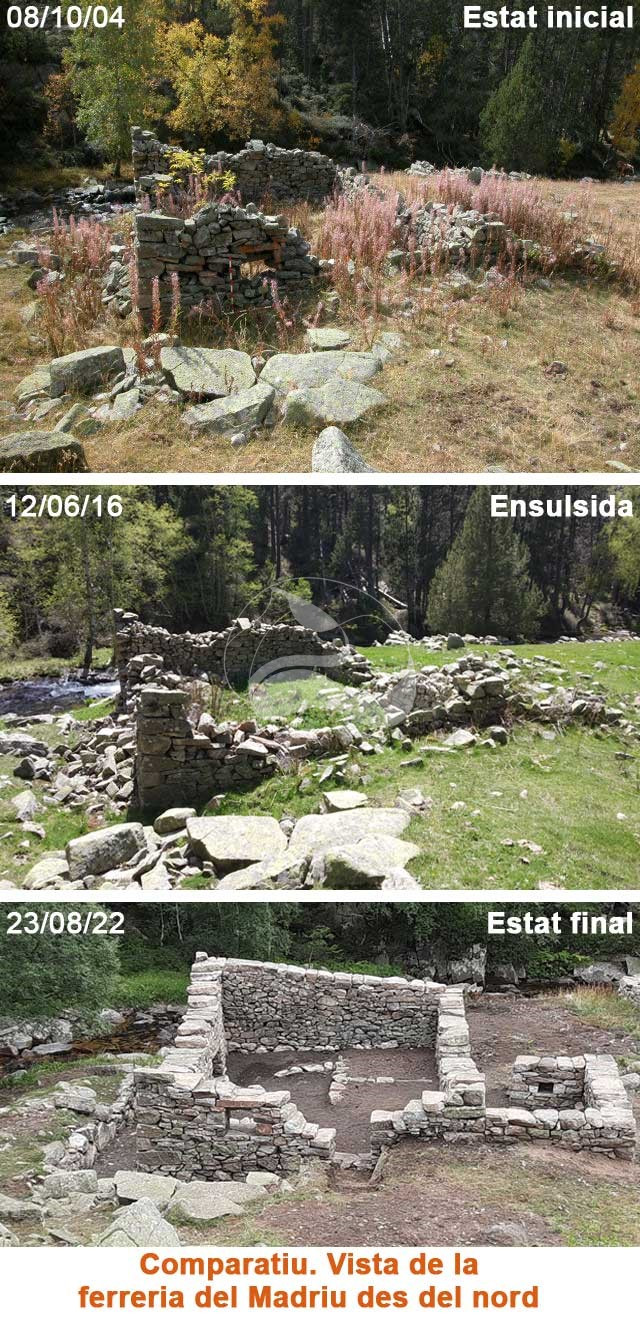
Although it was not initially foreseen, the evolution of the archaeological works has shown that it was a priority to act in the forge because the north retaining wall of the sector.
The trunks had collapsed almost from the base and the wall no longer rested on firm ground. The collapse could affect a part of the boot that was restored in 2021 and, in any case, it would result in clogging of the structures brought to light in 2022.

For the archaeologists, the initial program focused on the whole of the forge, and once this preliminary phase was finished, the second team had to work in the coal cellar and in the three areas of the forge house.
But during the 2021 campaign, some buildings whose existence was not known were identified in the house of the forge. In particular, in the north, a cabin built on the slope and a probable bread oven that are located, respectively, above the living area and the east annex room of the house. Given the functional interrelation between both central areas, the excavation of this construction was prioritized. We must also add the additional task derived from the fact that the preserved height of the walls of the forge house exceeded the forecast. Thus, some interventions in the coal cellar were canceled and the documentation of the two side spaces of the house and the oven was left for the 2023 campaign.
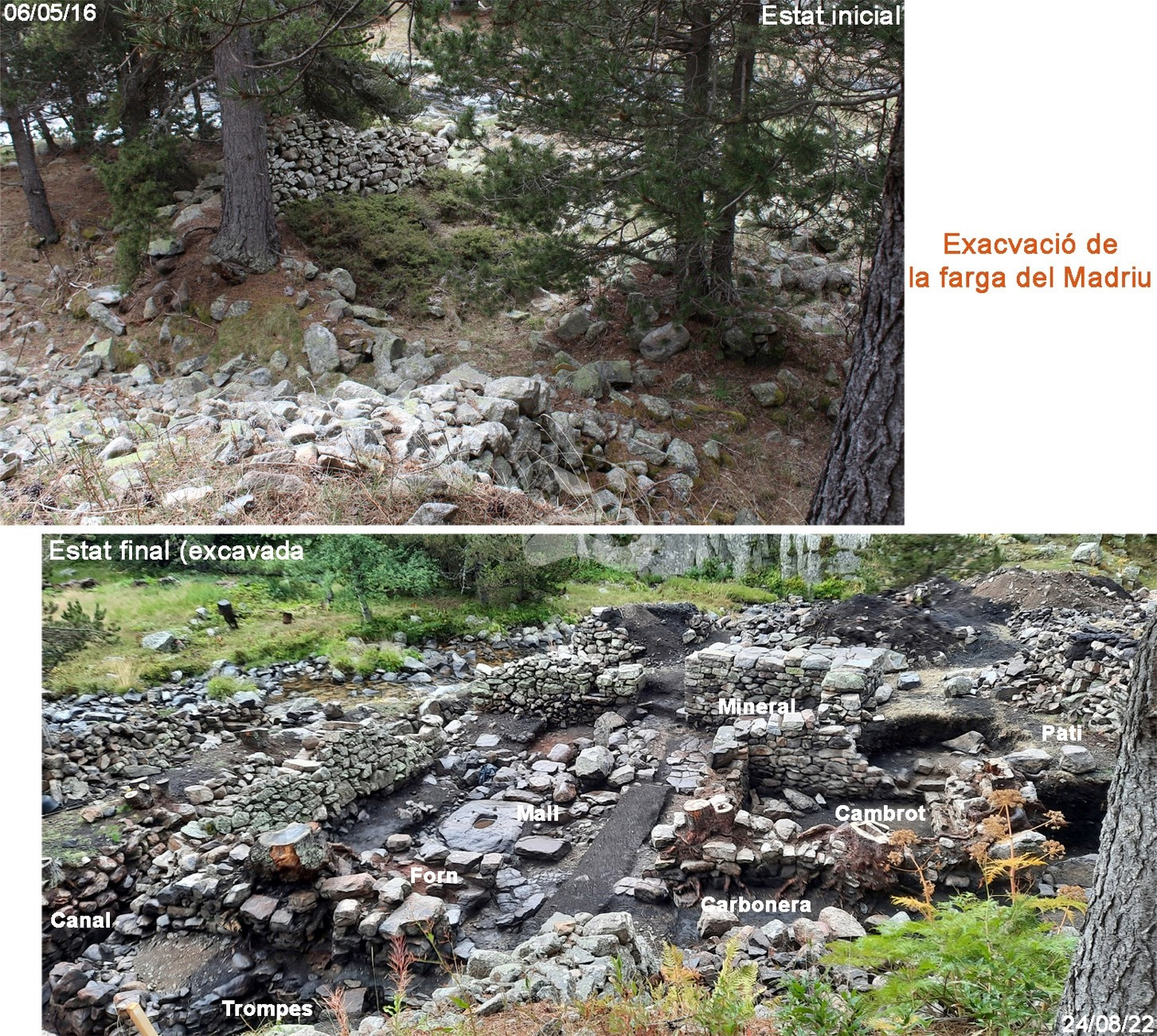
It should be said that apart from these unpredictable but normal contingencies, in a job of this type, adverse weather conditions should be added. The rains in the afternoon, almost daily, have hindered the correct development of the schedule.

